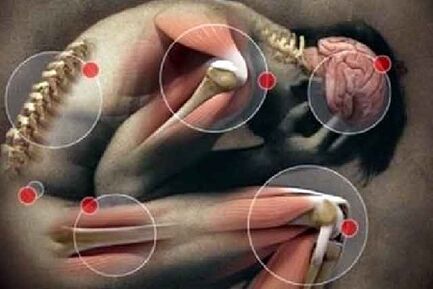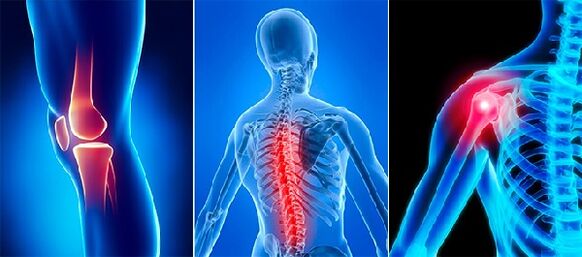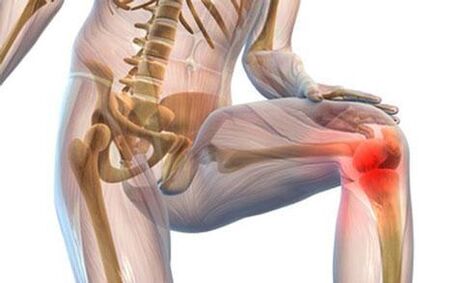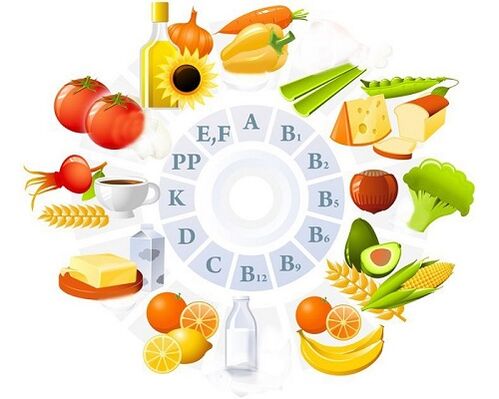Arthrosis is a chronic joint disease, accompanied by pathological changes in the hyaline cartilage, and then in adjacent tissue, a joint capsule and a synovial shell.
The loss is natural dystrophic and degenerative, which leads to a change in the structure of articular tissue, the loss of their functionality.In accordance with the data of the same statistics, arthritis is subject to 12% of the total population of the planet.From 62% to 65% of all episodes of the disease fall in people over 60 years of age.
30-35% of cases of joint damage to this pathology are in patients aged 40-60 years.And about 3% are young people aged 20-40 years.
What is it?
In simple words, arthritis is a chronic disease in which the progressive degenerative-district-district changes develop in the fusion due to the violation of metabolic processes.The most common common pathology is diagnosed in 6-7% of the population.With age, the incidence increases dramatically.
Most often, with arthritis, small brush joints are involved in the pathological process (in women 10 times more often than in men), the big toe, the intervertebral joints of the thoracic spine and the cervix, as well as the knee and hip joints.Knee and hip arthrosis occupies a major place in terms of the severity of clinical manifestations and a negative effect on quality of life.
Arthrosis is characterized by a comprehensive damage to articular and auxiliary equipment:
- Condritis - inflammatory changes in the joining cartilage;
- Osteitis - inclusion in the pathological process of subject bone structures;
- Synovitis - inflammation of the internal shell of the joint capsule;
- Burit - loss of peroseman bags;
- Reactive inflammation of the soft tissue (muscle, subcutaneous fibers, ligamentous apparatus) located in the joining projection involved (periarticular inflammation).
The disease is detected in 2%of people under 45 years of age, to 30%-from 45 to 64 years and to 65-85%with 65 years and older.The greatest clinical importance, due to their negative impact on the standard of living and the ability of patients, are arthrosis of large and medium limb joints.
Types of arthrosis
Depending on the cause of the pathological process, primary, secondary and idiopathic arthritis is distinguished within the joint.
The onset develops as an independent, secondary disease, as a result of an injury or infection, and the cause of idiopathic form is not known.In addition to the classification of the disease, depending on the cause of the pathological process, arthritis is distinguished at the site of the localization of destructive changes:
- Gonartrosis is the most common type of pathology, characterized by damage to the knee joints.Most often, gonarthrosis is detected in people with excess weight, with chronic metabolic disease in the body, poor immunity.Knee arthrosis progresses for a long time and gradually leads to a complete loss of motor function.
- Shoulder fusion arthritis is the leading cause of degenerative processes in this area are congenital shoulder union or excess loads in this area, for example, when wearing heavy shoulders.
- Ankle arthrosis - the main causes of degenerative process development at the ankle joint suffer injuries, displacement, stretch, fractures.In some cases, the development of the pathological process can provoke an autoimmune disease - rheumatoid arthritis.Ankle arthritis is prone to dancers, women who wear high heels, athletes.
- Uncoartrosis or cervical region arthrosis - the causes are neck damage, osteochondrosis progression, overweight, inactive lifestyle.At risk, people working on the computer are in the offices.In addition to severe neck pain, patients have pronounced dizziness, inhibition of consciousness, memory damage and fatigue.These symptoms are due to the compression of the vertebral artery through which the nutrients and oxygen enter the brain.
- Coxarthrosis or hip joint arthrosis - the main cause of the occurrence is age -related changes in the joint tissue.In danger, people over 45 years old.
- Finger osteoarthrosis - develops for the same reason as spondillartrosis.
- Polyrythrosis - characterized by damage to numerous joints with progressive degenerative processes in them, while ligaments, muscles and tissue joints are involved in the pathological process.
- Spondylarthrosis - destructive destruction is subject to spinal column tissue, namely its lumbar department.In a woman's risk group during menopause, as spondillartrosis progresses against the backdrop of a female sex hormone deficiency.

Causes of arthrosis
Arthrosis formation is facilitated by two causes - the load and the lack of a full food that supplies vitamins, minerals for tissue restoration.Each person's connections carry a load.Athletes and dancers, with physical work, the load on foot is greater, which means that bone joints wear faster and require high quality food.With a smooth lifestyle, the supporting apparatus wear more slowly but also requires periodic renovation of fabrics.
Therefore, the main state for the destruction and deformation of the joints is inferior nutrition, not dismantling the beneficial ingredients, which often occurs in the case of metabolic disorders.
We list the factors that contribute to the wear of articular compounds and metabolic disorders:
- Muscle weakness and improper loading of joints.Weakening of one or more muscle increases the load on the joint and disperse it uneven within the bone complex.Incorrect muscle loading is also formed for flat feet, scoliosis, therefore, with these "harmless" diseases with age, coated cartilage tissue, arthrosis appears.
The probability of arthritis increases with a strong physical exercise.
If daily loads exceed bone tissue capabilities, microtraumas are formed in them.Thicks arise in damage sites, which over time increase and deform the joint;
- Disordishes metabolic disorders (gastrointestinal disease - bile station, dysbiosis, gastritis, cholecystitis, pancreatitis, metabolic disease - diabetes);
- Psychosomatic causes - arthrosis psychosomatics confirms that the cause of the disease becomes a negative emotional state.Stress forms muscle spasm, constant stress disrupts the nutrition of all tissue (internal organs, bones, joints);
- Inheritance (the type of metabolism is inherited and its possible violations, a tendency for muscle weakness or inaccurate bone apparatus formation, in poor digestion - which is the basis for the development of arthrosis in old age).
Arthrosis is a disease of coated joints that have lost a significant supply of mineral substances and the ability to oppose loads and destruction.Therefore, with age, predisposition to the disease increases.After 70 years, arthritis is diagnosed with every second retiree.Since the maximum load falls to the foot (a person moves - walks, stands, runs, throws), then it is here that the first signs of arthritis are formed.
The mechanism of progression of the disease
When any of the causes that provoke the disease of the joint with arthritis appear, pathological processes begin to develop in it.The mechanism of their progress has not been fully studied, but the main stages of official medicine are known.
In the initial phase, the structure of the cartilage tissue and abnormal changes in the synovial fluid occurs.All this goes on due to violations of metabolic processes in which joint tissue does not take the necessary ingredients in sufficient quantities, or are deprived of some of them.
Next, the elasticity of collagen fibers and cartilage flexibility is lost, due to the fact that, with lack of nutrients, hyaluronic acid does not have time to produce the softness and flexibility of the structural composition of collagen fibers.The cartilage gradually dries, becomes fragile and cracks.The fluid in the synovial capsule is gradually impoverished and then completely disappears.
In the cartilage fabric, roughness, solid bone neoplasms are formed.At the same time, the deformation of other common tissue develops, their pathological degeneration, dystrophy and loss of physiological activity.For the patient, these changes mean the appearance of pain, dementia and joint immobility.
Symptoms of arthrosis
Arthrosis is not characterized by an acute clinical appearance, changes in the joints are progressive, growing slowly, which is manifested by a gradual increase in symptoms:
- pain;
- Periodically arising in crisis in the affected joint;
- joint deformation that occurs and improves as the disease progresses;
- stiffness;
- Limit of mobility (reduction of volume of active and passive movements in affected node)
Pain in arthritis is temporary nonsense, appears when moving, against the backdrop of an intense load, by the end of the day (it can be so intense that it does not allow the patient to fall asleep).The constant, non -woman's nature of pain for arthritis is non -characteristic and indicates the presence of active inflammation (subcondrial bone, synovial membrane, ligamentous apparatus or periarticular muscles).
Most patients noticed the presence of initial so -called morning pains after waking up or after a long period of inaction and switching during motor activity.Many patients determine this condition as the need to "develop a joint" or "scattered".
Arthrosis is characterized by breakfast rigidity, which has a clear localization and is short -term (no more than 30 minutes), sometimes perceived by patients as a "jelly feeling" in the joints.Probably a feeling of blockage, rigidity.

With the development of reactive synovitis, the main symptoms of arthrosis come together:
- pain and local increase in temperature determined by palpation of the affected joint;
- the constant nature of pain;
- Increased union in volume, swelling of soft tissue;
- Progressive decrease in volume of movements.
The stages and degree of arthrosis
During the disease, medicine distinguishes three stages that have changes in the signs of the disease, the intensity of damage and localization.At the same time, changes in all three phases relate to the types of fabrics that undergo pathological changes.
- The first degree of development of arthrosis of the joints is the initial stage of the disease.It is characterized by a slight lesion of cartilage tissue and the loss of physiological functions in collagen fibers.At the same time, in the first stage, minor morphological bone tissue disorders and structural changes in synovial fluid are marked.The node jump is covered with cracks, the patient has a slight pain at the site of localization of the pathology.
- The second degree is the development of arthrosis with an increase in dynamics.This stage is characterized by the appearance of stable pain, chromium.Morphological and dystrophic cartilage cartridges are marked during diagnosis, bone growths are detected.Osteophytes are formed - bone growth that are visible during a visual examination of the site of destruction.At the same time, the processes of degenerative changes occur in the synovial capsule, which leads to its structural impoverishment.The disease at this stage can often worsen and be regular.The pain gradually becomes constant.
- The third degree is active progress.At this stage, the synovial fluid is almost completely absent due to its degeneration, and the tissue of unexpected bone for each other.The joint mobility is almost completely missing, the pain becomes more vulnerable.Cartilage tissue is also missing due to degenerative and atrophic changes.The treatment of the third degree of arthrosis of the joints is considered impractical.
In addition to these three degrees of pathology development, there is a final stage - irreversible destruction of all common tissue.At this stage, it is impossible not only to develop productive therapy but also to remove the pain syndrome.
The inflammatory process usually begins with a second degree of damage, in rare cases, in the absence of medical intervention - in the first stage.Then, it becomes more difficult to stop it, and this can lead to secondary pathology, the development of the pathogenic microflora at the site of localization of the disease.
To rule out the severe consequences, treatment must start from the first degree, and the use of intensive care methods.In the last stage associated with complete destruction of cartilage tissue, only one methodology is allowed to ride the patient from pain and immobility of the joints - endoprosthetics with complete or partial replacement of the joint components.
Consequences
The consequences of premature treatment and launched arthrosis of the joints are filled with complications such as:
- disability;
- deformation without the possibility of recovery;
- the appearance of the vertebrates;
- a inactivity or immobility of the union;
- Reduction of quality and standard of living.
The chronic course, in addition to these complications, is associated with severe and frequent pain, complete destruction of the structural ingredients of the joints, discomfort, inability to perform physical work and play sports.
Troubleshooting
The diagnosis of arthrosis is based on the evaluation of anamy data, characteristic manifestations of the disease, the results of instrumental research methods.Indicating changes in general and biochemical blood tests for arthritis are not characteristic, they only appear with the development of an active inflammatory process.
The main instrumental method for the diagnosis of arthrosis is radiography, in diagnostically unclear cases, the tomography of calculated or magnetic rejection is recommended.
Knee and hip arthrosis occupies a major place in terms of the severity of clinical manifestations and a negative effect on quality of life.
Additional Diagnostic Methods:
- Attraumatic arthroscopy;
- Ultrasonography (evaluation of the thickness of the articular cartilage, synovial shell, the state of the joint bags, the presence of the fluid);
- Skintigraphy (assessment of bone bone tissue condition that form union).
How to treat arthrosis?
It is better to treat arthrosis of the joints at an early stage, the treatment itself should be pathogenetic and complex.Its essence is to remove the causes that contribute to the development of this disease, it is also necessary to eliminate inflammatory changes and restore the functions that were lost earlier.
Arthrosis treatment is based on several basic principles:
- Saturation of the fusion with oxygen, or the so -called intraarticular oxygenotherapy.
- Medication therapy.
- Intra -functioning blockade, as well as the decompression of the metaepiphis.
- Rational approach to food.
- Damaged connections should be eliminated from excess load.If possible, during treatment, it should generally be reduced to a minimum.
- After the established orthopedic regime.
- Classes of physiotherapy exercises.
- Passage of physiotherapy, which includes a magnet and electrotherapy, shock waves, and laser therapy.
- Sanatorium treatment.To do this, it is necessary once a year, with the recommendation of a physician, undergoing course treatment in specialized resorts.
Preparations for the treatment of arthrosis
Drug treatment is performed at the arthrosis irritation phase, chosen by a specialist.Self-medication is unacceptable due to possible side effects (for example, the negative effects of non-steroidal anti-inflammatory drugs in the gastric mucosa).
Therapy includes the purpose of such medicines:
- Anti -inflammatory drugs.The onset of arthrosis therapy is comprehensive, you can slow down the course of the disease and mainly improve the quality of life.It is worth dwelling in more detail at some treatment points.In particular, medication therapy includes in the initial stage - this is the removal of pain as well as the elimination of inflammatory processes that occur in the joints.For this, all doctors use non -steroid anti -inflammatory drugs.Experienced doctors do not recommend their oral use, as these medicines mainly irritate the stomach walls.Therefore, depending on the chosen drug, intravenous or intramuscular administration is used.Sometimes as auxiliary tools, NSAIDs are used in the form of ointments, but their absorption is extremely low, so it is not possible to achieve an important effect.
- Hormonal corticosteroids.When arthritis is in the phase of irritation, hormonal corticosteroids are advised.They get into the union.From the outside, you can use a special piece, oil or solution, which are made on the basis of burnt pepper.
- Chondroprotectors aimed at restoring cartilage and improving high quality synovial fluid composition will not be redundant.The course lasts a fairly long period of time until the improvement occurs.However, if the expected effect does not appear on a half -year fraud, the drug must be canceled.Also inside -what, along with chondroprotectors, it is advisable to use medicines made based on hyaluronic acid.They contribute to the formation of a cell membrane responsible for the formation of a junction.
Physiotherapeutic treatment
To stop pain, reduce inflammation, improve microcirulation, and elimination of patient muscle cramps with arthrosis, is directed to physiotherapy:
- At the phase of irritation.Describe laser therapy, magnetotherapy and ultraviolet radiation,
- In the phase of forgiveness.Electrophoresis and phonophoresis are presented.
Moreover, thermal procedures, sulfides, radon and sea baths are used.To strengthen the muscles, electrical stimulation is performed.A soft massage can also be used in the phase of remission.
Surgical treatment
With the ineffectiveness of these methods of exposure, in the presence of complications, addressing the surgical treatment of arthrosis:
- Decompression of metaepiphytis and elongated intraosseous blocks (decreased intraosse pressure in the affected area);
- Corrective osteotomy;
- Acoprostetics of the joints.
In the early stages of the disease, mechanical, laser or cool debate is used (softening the surface of the damaged cartilage, removal of non -applicable areas).This method effectively stops pain syndrome, but has a temporary-2-3 years effect.
Folk remedies
Most people in our time do not want to take pills or make injections.Therefore, they are wondering - how to cure arthritis with the help of folk remedies?For the most part, such funds are aimed at increasing the body's tone, improving blood circulation, relieving pain and increasing immunity.
For the treatment of this disease, such traditional medicine recipes are used:
- The egg solution is prepared by the fresh egg yolk, which is mixed with terpentine and apple cider vinegar in a ratio of 1: 1: 1.Then you have to wrap everything with a wool scarf.It is recommended to perform friction for 1 month 2-3 times a week.
- The pharmacy is bought from the root of Eleasil.As a rule, it faces a package of 50 g.For the preparation of the solution, it will take half packs of plant roots and 150 ml of high quality vodka.The ingredients are mixed, placed in a dark bottle and insisted for 12 days.Centers are performed before bedtime, and if possible in the morning.
- The use of boiled oats also yields good results.Take three or four tablespoons of oats, pour boiling water and cook over low heat for five to seven minutes.The amount of water used should ensure the observation of thick porridge, which must be cooled and used as a compression at night.Use just boiled flakes recently.Yesterday's porridge for compression is not appropriate.
- Broin leaves, nettles and calendula inflorescence are taken in equal parts.As a result, you need to take two tablespoons.We fold the chopped collection that results in a thermos, pour a liter of boiling water and leave it overnight.Starting in the morning, it is necessary to take half a glass of diving four to five times a day.The course of receiving this recipe is two to three months.

Breast leaf tinctures, horseradish, garlic and accent grains are also considered effective.Treatment of arthritis with folk remedies will be the most effective if you combine it with medication treatment.
Arthritis
The basic principles of food for arthritis are reduced to the following points:
- Do not eat heavy food for the night so as not to cause an arthritis attack.
- Eat fifth.
- Constantly monitor the weight in order to avoid increasing body weight,
 And that means extra load on the sore joints.
And that means extra load on the sore joints. - When there is no irritation of the disease, to take a walk after eating.
- The menu should be balanced, compiled with the attending physician.
There is absolutely no complaints about fish dishes - they can be used enough, of course, in reasonable amounts.
- Do not forget about regular vitamins with food.For patients with arthrosis, B vitamins are particularly important
- An important role in the treatment of arthrosis is assigned to the cold man.Such food will be a true repository of trace elements for sore joints.The most important component in the cold is a collagen of natural origin.
- Vitamin B will help produce hemoglobin.It can be "taken" by eating bananas, nuts, cabbage and potatoes.It is worth dealing with greenery and legumes.They will become a source of folic acid.Liver, fungi, dairy products, and eggs will be useful.They are rich in riboflavin.
By observing the treatment regimen prescribed by the doctor, it can be achieved that the disease will withdraw, and the damaged tissue will begin to heal.
PREVENTION
Prevention of arthrosis begins with proper nutrition.It is necessary to try to reduce salt consumption as well as food that can disrupt metabolism.These include legumes, fatty meat, alcohol.The diet includes cabbage, greens and fish.
To prevent arthrosis, it is necessary to participate in the classes of physical education, to make warmer.If possible, it is best to spend a few kilometers standing.It is also important to monitor your weight and prevent weight gain, as this will give an additional load to the inflamed joints.It is not recommended to get pills in order to lose weight, as they can disrupt metabolism in the body.
Predict
Predicting for life is favorable.The performance of social forecast and work depends on the term of diagnosis and the onset of treatment, decreases when tightening the solution of the surgical treatment of the disease if necessary.



















